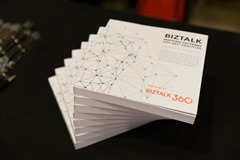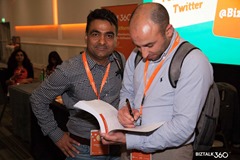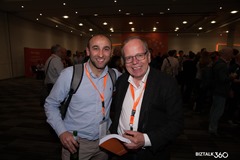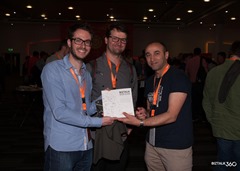This post was originally published here
INTEGRATE (formerly known BizTalk Summit) is the premier, and maybe the biggest integration conference in the world focused on Microsoft Integration and a must go event for anyone who is working in this area. So, if you missed the chance to attend the London event this year, this is your last chance to meet and interact with the Microsoft Product Group, Microsoft Integration MVP’s and with almost 250 experts from the field.
Since the first BizTalk Summit event, I’m a constant presence as a speaker at these events, but unfortunately, due to several professional and personal factors I didn’t have the pleasure to be present in first INTEGRATE USA event, but I’m thrilled to be able to be present in this year’s edition… not only I am present as a speaker but my company DevScope is a proud sponsor of this event!
But if all of this was not enough, I can also say that:
- I will be the only non-Microsoft employee with a dedicated session about BizTalk Server – I cannot imagine such big event focus on Microsoft integration space without proper session about BizTalk Server;
- I will be responsible to close this amazing event – we can say that we can apply the following proverb here: “it is the cherry on top the cake, or the best stays always to the end”
You are still on time to register for the conference here.
About my session
Session Name: BizTalk Server Fast & Loud
Session Overview: In this session, I will talk about a hardcore BizTalk topic that will address the following question: How can you optimize/tuning your BizTalk environment for performance. Optimizing your BizTalk Server installation is not an easy thing to do because it affects several layers and skills. This topic is very well documented by the product group but the problem is that it is very extensive and complex. This presentation will aim to guide you through the most important steps, operations or task you need to do or be aware in order to boost the performance of your BizTalk Server environment and that you can adjust or follow according to your needs because, depending on your infrastructure, this can be a straightforward operation or a very extensive and hard operation. But I will try to keep it as simple as possible so everyone can understand and follow.
Bringing gifts
As I did in the last two INTEGRATE events in London, I will bring gifts to the attendees, in this case, my latest BizTalk Server sticker version: BizMan, The BizTalk Server SuperHero Sticker

So, fill free to reach me out and ask for a BizTalk sticker.

BizTalk Mapping Patterns and Best Practices book
Last but not the least, it will also be a good opportunity for you to grab a physical copy of my book about BizTalk mapping: BizTalk Mapping Patterns and Best Practices, the book is a reference guide mainly intended for BizTalk developers to make their day-to-day lives easier. It offers insights on how maps work, the most common patterns in real time scenarios, and the best practices to carry out transformations and has as technical reviewers Steef-Jan Wiggers, Nino Crudele, Michael Stephenson and José António Silva. Some of the key patterns address in this book are:
- Direct Translation Pattern: Simply move data to a different semantic representation without any manipulation or transformation.
- Data Translation Pattern: Similar to Direct Translation Pattern with the additional step of data manipulation or transformation to match the target system format.
- Content Enricher Pattern: Set up access to an external data source (say, a database) to enhance the message with missing information.
- Aggregator Pattern: Similar to Content Enricher Pattern but a different mapping technique. Multiple inbound requests mapped to a single outbound request.
- Content Filter Pattern: Opposite of Content Enricher Pattern; remove unnecessary items from message (even based on condition) and send what is exactly required
- Splitter Pattern: Opposite of Aggregator Pattern; single inbound request to be mapped to several outbound requests
- Grouping Pattern: Example – shopping catalog where items are grouped into categories like Sports, Women Cosmetics, Electronics, Computers, and so on.
- Sorting Pattern: In most scenarios, Grouping Pattern and Sorting Pattern will be bound together
- Conditional Pattern: To receive only a portion of the data from the message, apply a conditional statement to filter the result set at the source.
- Looping Pattern: For instance, a record in the source system may occur multiple times in the input file. They need to be transformed according to the target system
- Canonical Data Model Pattern: Ensures loose coupling between applications; if a new application is added, only the transformation between the Canonical Data Model has to be created.
- Name-Value Transformation Pattern: Target system requires a Name-Value Pair (NVP) structure, or the source system has an NVP structure and the target requires a hierarchical schema
Click here to download your free digital copy of the book.
And since I will be there, if you want m please reach me out if and I will sign your copy of the book:






